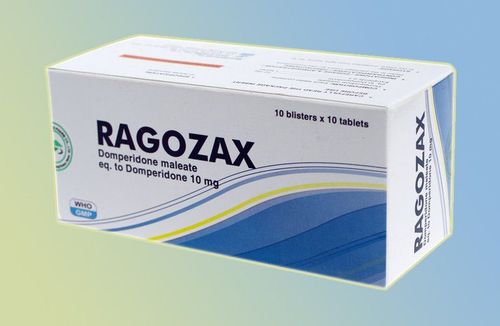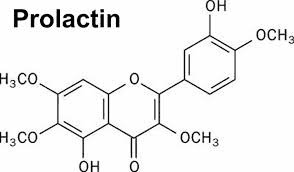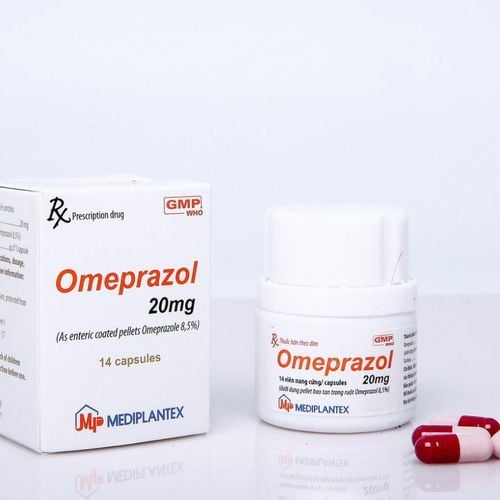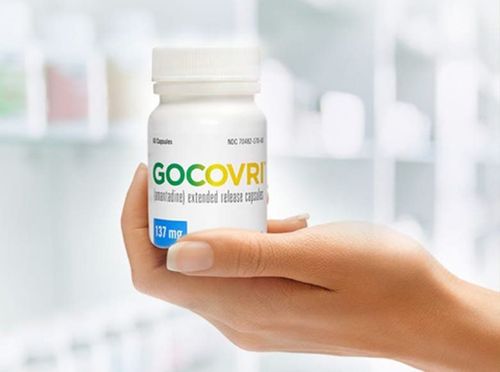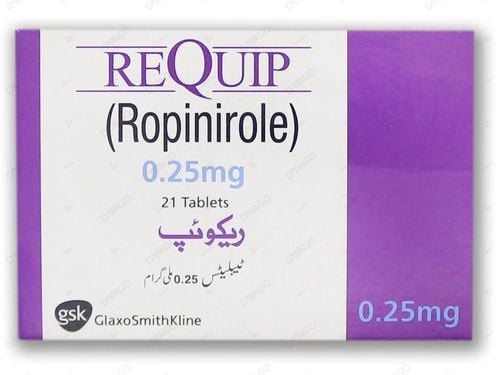This is an automatically translated article.
Ameghadom also known by its common name Motilium, a dopamine antagonist drug used in the treatment of symptoms of nausea and vomiting, diseases of the gastrointestinal tract such as gastroparesis, stimulates breast milk production.
1. Effects of the drug Ameghadom
Ameghadom has the main ingredient is Domperidone maleate with the content of 10mg Domperidone. Ameghadom is often prescribed by doctors to treat diseases such as:
Treatment of symptoms of vomiting and nausea:
Domperidone group of drugs has antiemetic activity, so it is indicated for use in the treatment of nausea and vomiting. associated with acute migraine.
Treatment of Gastroesophageal Reflux:
The active ingredient Domperidone can be used to increase the ability of food to pass through the stomach by increasing gastrointestinal motility and thus effective in the treatment of gastroparesis thick.
Drugs used to stimulate breast milk:
To produce breast milk, a hormone prolactin is required, while the ingredient in Ameghadom is like an anti-dopaminergic agent, which leads to increased prolactin secretion and promotes lactation. .
Use in the treatment of symptoms of Parkinson's disease:
Domperidone can be used to relieve nausea and gastrointestinal symptoms in Parkinson's disease.
Ameghadom can be used in indigestion and is effective in treating reflux in children.
Other uses of the drug:
Used for some patients with: Gastric prolapse, symptoms after gastrectomy, chronic gastritis, esophageal reflux, taking anti-cancer drugs or L -dopa.
Mechanism of action:
The main ingredient of the drug belongs to the active group domperidone, it is a dopamine receptor antagonist with antiemetic properties, capable of stimulating peristalsis of the gastrointestinal tract, increasing muscle tone Cardiac constriction, increased amplitude of pyloric sphincter expansion after meals. Moreover, the drug Ameghadom is assessed as safe, does not affect the psyche and nervous system.
2. Dosage and how to use Ameghadom
How to use: The drug is prepared in the form of uncoated tablets and used orally. In order for Ameghadom to be most effective, patients should take the drug 30 minutes before meals. Because the amount of food in the stomach affects the body's ability to absorb the drug.
Dosage of the drug:
In the treatment of symptoms of vomiting and nausea: Adults use a dosage of 10-20mg, every 4-8 hours; For children, the dose is 0.2-0.4mg/kg, every 4-8 hours.
In the treatment of dyspepsia symptoms : Adults take a dose of 10-20mg, 3 times a day before meals and a dose of 10-20mg in the evening, the duration of use should not exceed 12 weeks.
Note: The patient does not arbitrarily increase the dose of the drug compared to the dose prescribed by the doctor. Not only will the disease not improve, but the risk of side effects will also increase.
Contraindications:
Do not use the drug in patients who are allergic to the ingredient Domperidone maleate. Do not use for patients with gastrointestinal bleeding, mechanical intestinal obstruction, intestinal perforation. Contraindicated in patients with prolactin-secreting pituitary adenomas.
3. Ameghadom side effects
Common side effects: Dry mouth, diarrhea, abdominal pain, nausea, itching, rash, urticaria and hyperprolactinemia (symptoms include breast enlargement, urticaria, breast tenderness and tenderness, gynecomastia, hypogonadism, and menstrual irregularities).
Uncommon reactions : Causes prolactin levels in the body to rise. Often drugs of the active group Domperidone will cause hyperprolactinemia, hyperprolactinemia can block the secretion of gonadotropin-releasing hormone from the hypothalamus. Thus blocking the secretion of follicle-stimulating hormone and luteal-forming hormone, leading to hypogonadism and low sex hormone levels.
Currently, according to statistics, there is a rate of 10 to 15% of women experiencing mammary gland hyperplasia syndrome (mammary gland enlargement), muscular dystrophy (manifested as pain and tightness in the breast), affecting the menstrual cycle. menstrual period during treatment with domperidone therapy.
Men may experience decreased libido, erectile dysfunction and impaired spermatogenesis, hemorrhage, gynecomastia.
Very rare reactions:
Use of Ameghadom may increase the risk of sudden cardiac death due to its effects on prolongation of the cardiac QT interval and ventricular arrhythmias. This risk depends on the dose of the drug used by the patient, which can be high doses and long-term use, especially common in the elderly.
4. Precautions while using Ameghadom
Domperidone should be used with caution if the patient has kidney problems, liver problems, heart disease, electrolyte disturbances, tumors in the pituitary gland, and bleeding or blockage in the digestive system. Before using domperidone, tell your doctor if you are allergic to any of the ingredients in Ameghadom. Domperidone should be used with caution if the patient has a history of breast cancer and is lactose intolerant. Tell your doctor if you do not get better after taking this medicine or show signs of getting worse. For pregnant women: Ameghadom is classified as a class C drug. Animal studies have not shown adverse effects on the fetus, however, these studies are not sufficient to prove the drug is real. safety. Therefore, the patient should only use the drug if the benefit outweighs the risk to the fetus and requires the advice of a doctor. Lactation: Domperidone is absorbed into breast milk. If the patient is breast-feeding, do not use the drug without consulting a doctor.5. Drug interactions
Clinical studies in humans have shown that when Ameghadom is used in combination with the CYP3A4 inhibitor ketoconazole, the Cmax and AUC of domperidone are increased 3 to 10 times. Abametapir: The serum concentration of Domperidone may be increased when it is combined with Abametapir. Opioid analgesics (eg Morphin) and Antimuscarinics (Atropine), which inhibit the effectiveness of the drug Domperidone. Abatacept: The metabolism of Domperidone may be increased when combined with Abatacept. Acalabrutinib: The metabolism of Domperidone may be reduced when combined with Acalabrutinib. Aclidinium: The therapeutic efficacy of Domperidone may be reduced when used in combination with Aclidinium. Acrivastine: The risk or severity of QT prolongation may be increased when Acrivastine is combined with Domperidone. Acyclovir: The metabolism of Domperidone may be reduced when combined with Acyclovir. Adenosine: The risk or severity of QTc prolongation may be increased when Adenosine is combined with Domperidone. Amitriptyline: The therapeutic efficacy of Domperidone may be reduced when used in combination with Amitriptyline. Anakinra: The metabolism of Domperidone can be increased when combined with Anakinra. The basic information about Ameghadom in the article is for reference only. Because this is a prescription drug, patients should not arbitrarily use Ameghadom, but need to contact a specialist directly for a suitable prescription to ensure safety for health.





